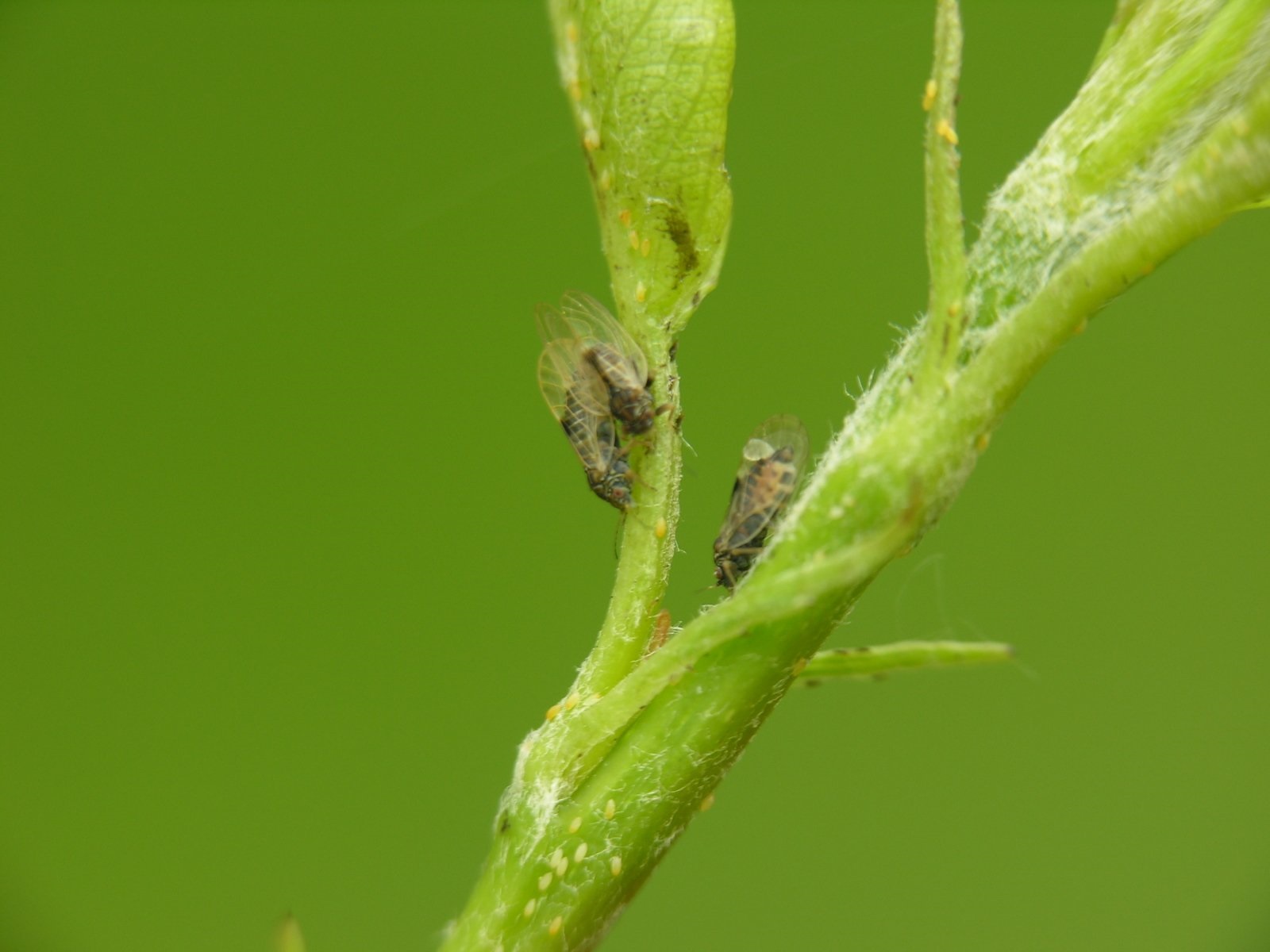Please click here to access the main AHDB website and other sectors.
Seven tips to prevent, control and detect pear sucker
Monday, 29 March 2021
Putting natural enemies like anthocorids at the heart of your IPM strategy is essential to prevent and control pear sucker successfully, explains Scott Raffle.
Pear sucker (Cacopsylla pyri) is one of the most persistent pests of pear and notoriously difficult to control.
Avoiding the use of broad-spectrum control products and enhancing the number of natural enemies such as anthocorids, earwigs and ladybirds, can reduce reliance upon conventional spray products. It can also improve control from season to season.
1. Monitor and record numbers of natural enemies
Natural enemies of pear sucker include earwigs, anthocorids and ladybirds. You should monitor and record numbers of these alongside pear sucker eggs, nymphs and adults to inform decisions on control options.
2. Rely on natural predators if the numbers of pear sucker eggs are low
Avoid spraying and rely upon natural predators where:
- The numbers of pear sucker eggs do not exceed 1,000 per 30 shoots per week
- The numbers of natural enemies are greater than 10 per 30 shoots per week
3. Release commercially produced anthocorids
Anthocorids should be released early in the season if the numbers of natural enemies are low.
4. Boost anthocorid populations
Enhance the surrounding habitat to encourage long-term resilience in anthocorid populations – hazel, willow and nettle are good alternative hosts.
5. Select plant protection products that are safe to natural predators
If the numbers of pear sucker eggs exceed the threshold of 1,000 per 30 shoots per week, spray control could be necessary. Make sure you choose products that are safe to natural predators.
Spirotetramat (Batavia) is safe to anthocorids. It offers good control of early and late stage pear sucker nymphs, both on the shoot tips and on cluster leaves in the central part of the tree.
Spirodiclofen (Envidor) is safe to anthocorids and is effective if applied at the egg or early nymph stage of development.
Back to: Integrated pest management (IPM)
6. Monitor the crop
You should monitor your crop from February onwards for the presence of pear sucker eggs and predators. It is critical to apply any necessary control products at the correct time to gain effective control.
7. Think about spray frequency
Be considered with the choice, numbers and timing of your spray applications. Think about spray frequency and its impact on natural enemies.
Entomologists at NIAB EMR worked with six commercial pear growers, training them to identify pear sucker eggs, nymphs and adults along with their natural enemies. They kept records of these during the season to identify predator and prey thresholds. It was found that, in general, sprays could be avoided where there were <1,000 pear sucker eggs per 30 shoots per week and >10 natural enemies per 30 shoots per week.
Read the full research report on improving IPM in tree fruit crops
Scott has worked for AHDB for 11 years, having spent three years at HDC and 30 years in the fruit industry in total. Prior to his time at AHDB, Scott was a fruit advisor/agronomist for 16 years with ADAS, specialising in soft fruit and apple and pear storage.
Image © Jerry Cross.


